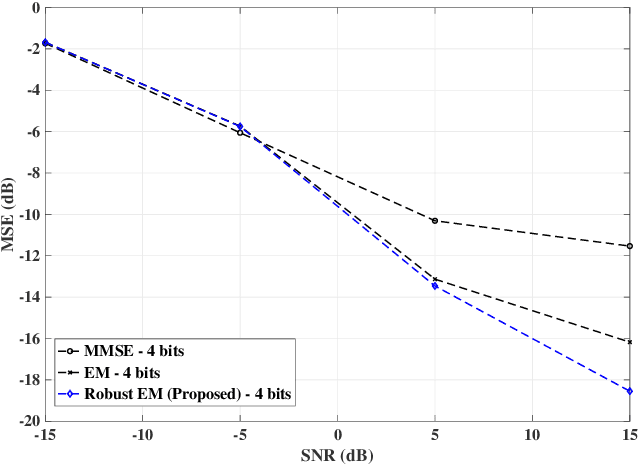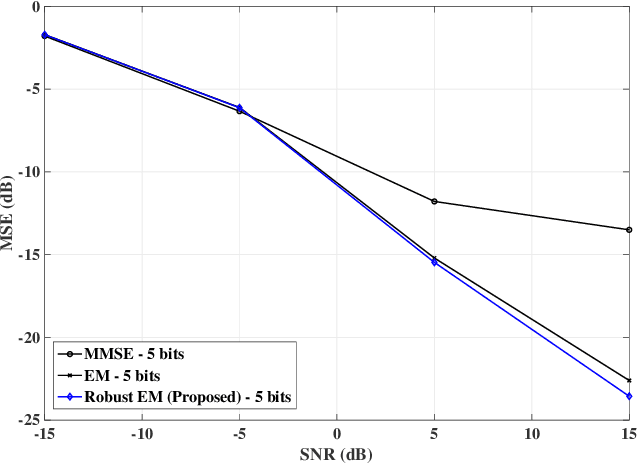Muhammad Z. Shakir
Millimeter Wave Channel Estimation for Lens based Hybrid MIMO with Low Resolution ADCs
Nov 15, 2022


Abstract:The high path loss associated with millimeter wave (mmWave) frequency communication can be compensated by large scale antenna arrays such as multiple-input multiple-output (MIMO) systems. The hybrid beamforming architecture which uses fewer radio frequency chains is implemented to reduce power consumption and hardware complexity, while still supporting multi-stream communication. We propose an efficient expectation-maximization (EM)-based mmWave channel estimator for a lens-based hybrid MIMO system with low resolution sampling at the receiver. The lens-based beamformer is investigated to provide increased antenna gain and reduced implementation complexity as the conventional beam selection network is excluded. Low resolution sampling at the analog-to-digital converters is implemented for reduced power consumption. The proposed solution with a robust maximum a posteriori estimator based on the EM algorithm performs better than the conventional EM approach and minimum mean square error baselines in medium to high signal-to-noise ratio regions.
Flexible Hybrid Beamforming for Spectrally Efficient 6G Joint Radar-Communications
Nov 15, 2022



Abstract:Joint radar-communications (JRC) benefits from multi-functionality of radar and communication operations using same hardware and radio frequency (RF) spectrum resources. Thus JRC systems possess very high potential to be employed into the sixth generation (6G) standards. This paper designs a flexible beamformer for multiple-input multiple output (MIMO) JRC with maximized spectral efficiency (SE). Hybrid beamforming is implemented which constitutes lesser number of RF chains than number of transmitter antennas. We jointly express JRC rate with communication and radar entities including a weighting factor which depicts the dominance of one operation over the other. The joint-SE based proposed method optimally selects the number of RF chains with flexible hynrid beamforming design. Furthermore, when the communication operation takes place the proposed method takes into account the interference occurring from the radar operation and vice-versa. Fractional programming based selection procedure is used for flexible beamforming and optimal number of RF chains while considering interference of each operation. Simulation results are presented and compared with different baselines to show effectiveness of the proposed flexible hybrid beamforming method.
 Add to Chrome
Add to Chrome Add to Firefox
Add to Firefox Add to Edge
Add to Edge